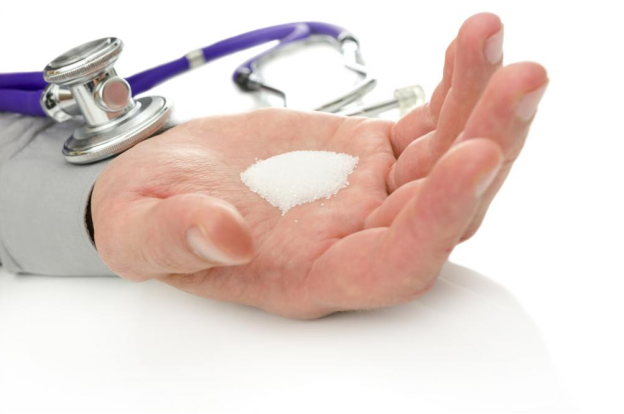According to the World Health Organization, Diabetes Mellitus is a chronic condition, in which the pancreas produces lesser quantities of insulin.
It’s one of the most common problems in the United States. Research shows that more than 100 million Americans are suffering from this problem.
Insulin deficiency leads to several problems, which include an increased concentration of glucose in the blood, which subsequently leads to further damage to your body. Your blood vessels and nerves are especially susceptible to damage.
Glucose and Insulin
Glucose is the sugar found in food items. It provides your body with the energy that it needs. Your body breaks down Carbohydrates and absorbs glucose through the small intestine.
The Glucose in digested food is then absorbed in the bloodstream, which transports it to different parts of your body.
Glucose cannot enter the cells on its own. It needs insulin in order to do so. Insulin is a hormone, which is produced by the beta cells in your pancreas. It’s also responsible for controlling the level of glucose in your body.
Just think of it this way; you just got done with your meal and your body’s Glucose levels have increased because of that. In order to regulate the high level of glucose, the pancreas will release more insulin in your body.
This allows glucose to enter the cells and reduce its level in your body. Once the glucose levels decline, your pancreas will also reduce the level of insulin produced.
When you are fasting, your body continues to produce insulin at a slow and steady rate. It does so in order to regulate the blood’s sugar level in your body.
What Are Different Types Of Diabetes?
Diabetes is divided into two categories: Type 1 and Type 2.
Type 1 diabetes is when your Pancreas loses its ability to produce Insulin. Previously it was common among children and adolescents; however, recently it has become common among the older population as well.
Type 2 diabetes, on the other hand, is when your body stops responding to Insulin. It’s a lot more common when compared to Type 1 diabetes and is a lot more common among adults.
Apart from these two, some other types of diabetes include:
1. Secondary Diabetes
In this form of diabetes, your blood sugar levels increase due to another medical problem. This disease destroys the pancreatic tissue that’s responsible for producing insulin.
2. Gestational Diabetes
Did you know that diabetes can occur during pregnancy as well? This is because of the hormonal changes, which take place in your body during pregnancy. These changes elevate your blood sugar levels.
Majority of the women who suffer from this disease during pregnancy go on to develop Type 2 diabetes later in life.
3. Hormonal Imbalance
You might also suffer from diabetes if your body starts producing excessive growth hormones. This can either happen because of Acromegaly or Cushing’s syndrome.
In Acromegaly, the pituitary gland produces growth hormones whereas, in Cushing’s syndrome, the adrenal glands produce excessive amounts of Cortisol, which elevates your sugar levels.
Risk Factors
Unlike Type 2 diabetes, the risk factors for Type 1 diabetes are not apparent (apart from family history). Certain ailments and infections related to pancreas might lead to Type 1 diabetes.
Some risk factors for Type 2 diabetes include obesity and excessive weight, increase in blood pressure, an inactive lifestyle, family history, age, insulin resistance, and Polycystic ovary syndrome and impaired glucose tolerance.
Symptoms of Diabetes
People suffering from Type 1 Diabetes will notice they have started losing weight. In addition to that, some additional symptoms include excessive secretion of urine, thirst, and fatigue.
Some other symptoms of the disease include nausea, vomiting, infections, and an increase in Glucose levels.
These symptoms are not as apparent in patients suffering from Type 2 diabetes. It can be several years before you are even diagnosed with the disease.
Complications Due To Diabetes
Diabetes is one of the leading causes of blindness and other visual disabilities. It causes damage to the small blood vessels located in the retina, which result in loss of vision.
It’s also one of the leading causes of Kidney failure. It depends on the severity and the duration of the disease. Restricting dietary protein and controlling blood pressure might help prevent this problem.
50% of the people who suffer from heart diseases usually die because of heart diseases.
Treatment for Diabetes
Treatment for diabetes depends both on your diet as well as on your lifestyle. Studies conducted by WHO reported that 40% of the people who suffer from this disease need oral medication in order to control Glucose level in their body. Another 40% need to get insulin injections.
Researchers are always on the lookout for alternate methods of treatment for diabetes. One such way is using Coccinia Indica.
Coccinia Indica
Coccinia Indica is a creeping herbal plant that is commonly found in countries like India and Bangladesh. It’s a climbing vine that spread over trees as well as shrubs. Its flowers are large, white and consist of five tubular petals.
For centuries now Coccinia Indica has been used in Ayurveda medicine in order to treat problems like high blood sugar level, inflammation, asthma and other cardiovascular diseases. In many ways, it’s similar to insulin.
Let’s take a look at some medicinal properties of Coccinia Indica:
It’s a Powerful Anti-Diabetic Plant
If medical journals are anything to go by, we can conclude that Coccinia Indica is a powerful anti-diabetic. Several pieces of research have been conducted in order to understand this herb’s anti-diabetic properties.
One of these studies involved 60 lab rats (30 of them were normal while the rest were diabetic). All of these were divided into 6 separate groups.
Group 1 had normal rats, 2 had normal rats who had been given Coccinia Indica, group 3 had diabetic control, group 4 had diabetic rats who were given Coccinia Indica, group 5 consisted of normal rats who had been given Glibenclamide and group 6 had diabetic rats who had been given Glibenclamide.
The experiment lasted for 45 days. After that, the animals were deprived of food for the night and then decapitated. Their blood samples were collected in order to determine the glucose level. Plasma was separated from the blood in order to determine the insulin level.
The test results showed that Coccinia Indica did have an impact on glucose and insulin levels and was effective in treating diabetes.
Another separate research that involved sixty diabetic patients also produced more or less the same results.
These patients were aged between 35 and 60. All of them were randomly assigned a placebo and the experimental herb, which they were given for around ninety days.
Their biochemical, physical and dietary activity was monitored throughout this time. The results of the study showed that the glucose level of people who had been given the herb had had lower blood glucose levels. There wasn’t any major difference in levels of serum lipid.
The study concluded that the plant had hypoglycemic action, which is beneficial for patients suffering from mild diabetes. The plant helped normalize blood glucose levels in animals and helped improve glucose tolerance.
It has Analgesic Properties
An analgesic agent is a compound that is designed in order to provide relief from pain. There are different groups of analgesics, which include simple analgesics, Opioids and Non-steroidal anti-inflammatory drug.
Coccinia Indica has anti-inflammatory properties (due to the presence of Cannabidiol). It targets the affected area in your nervous system and alleviates pain.
Based on the information provided above we can all agree that Coccinia Indica does have the potential to be an alternate source of treatment for diabetes.
While it’s true that additional research is required (especially its connection to physical activity, diet and age of patient), all the signs are positive. Only time will tell how long it will take for doctors to adopt this herb for treating Type 1 and 2 diabetes.
Reports suggest that in states where medical marijuana is legal, there are fewer incidents of death due to opioid overdoses. If you want to use marijuana for medical purposes in regions like California and New York, you are going to need a medical marijuana card.
It’s quite natural to feel confused about the process of getting the card. This is where we come in.
Indica MD is an online telehealth platform. We go out of our way to assist to military veterans, wheelchair professionals and first responders to obtain a medical marijuana card NYC.
We make sure that we follow all the regulations and laws of different states. In addition to that, we ensure that all of our practices are in compliance with HIPAA.
You have the option of registering via email. All you will need to do is provide us with a password and email account and fill out a questionnaire.
You can also visit our website for an online evaluation with one of our doctors. They can also provide answers to any query you might have like does cannabis cure cancer. You do not have to worry about the quality of marijuana. Contact us now.









Leave A Comment
You must be logged in to post a comment.